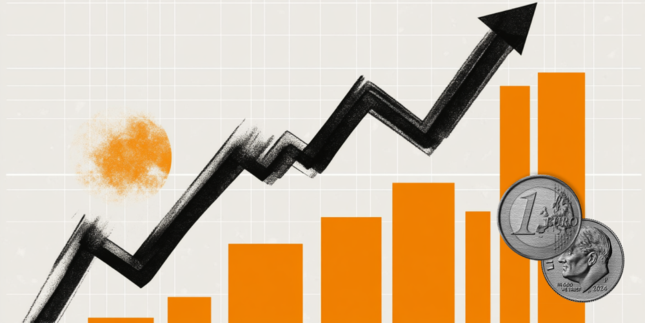The first thing you will learn as soon as you start your educational journey in the trading world is technical analysis. Technical analysis, as a trading technique, tries to predict future price movements based purely on past market data.
Technical analysis fanatics advocate that, in order to make favourable predictions about the future, there is nothing else you need to know about the world except the past prices and volume. According to them, you can lock yourself in a room, stare at the chart of any asset pair and make a profit based on some predefined rules and guidelines. You do not really need to know anything about the context in which the trading is taking place. All in all, not much of a difference from a tarot card reading.
There are two reasons why this trend is dominant especially in the retail trading industry - it's easy to practice and cheap! The most valuable resource when it comes to trading and investment is information and information has a price tag. Technical analysis does not require much of it. Just past prices which are then fed into some of the gazillions of available indicators and pattern detectors out there and here you go - you have a fortune teller! When the indicators state is X then it's better to buy and when the indicators state is Y, your best bet would be to sell. Follow the recipe and you will be successful! At least that is what the theory says...
The other side of the narrative is to use fundamental analysis. You will hear about fundamental analysis in the introduction part of numerous available trading courses but more or less that's it. Fundamental analysis is hard for introductory courses to dive into. It is much more than trading the GDP and the NFP. It requires a deep knowledge of the underlying industry and the relevant forces that drive it. This means access to a lot of information which is time-consuming to gather, hard to interpret and sometimes costly, i.e. access to a Bloomberg Terminal.
It also requires a certain educational background to be able to translate the information into insights about the future. For example, you need to have a solid background in economics and finance. It is a form of analysis not easily accessible to amateurs, hence it is skilfully skipped when training entry-level retail traders. A common advice a retail trader will get when trading is "Don't trade the news". This is just a disguised version for "Don't trade something you do not understand".
While technical analysis is not useless per se, on the contrary, it is an excellent tool as it is based on solid behavioural economics, it is also dangerous when used out of context. In the pandemic era, the need for understanding the fundamental forces of the economy becomes more prominent and highlights the importance of fundamental analysis. If you have been trading stocks, indices or commodities during this period, only using technical analysis, then you probably haven't done so well, since it is likely that you have received numerous false signals.
There is not much a stochastic indicator can tell you about a price war between the Saudis and the Russians, or a MACD about the Sino-American trade disputes or the recent market-disruptive Trump tweets. To make sense of what is happening on a chart, you need to look beyond it and understand what is going on in the world nowadays. You need to know a bit of everything - economics, geopolitics and even a bit of epidemiology.
A rational trading strategy should always be a mixture of fundamental and technical analysis. My personal preference is to establish a long-term trend, based on fundamentals and trade this trend using technical analysis to find good entry points. For example, in a world that is gradually reopening from lockdowns, airports resuming operations, people going back to work and planning their vacations, OPEC+ cutting oil production and the market heading towards a supply deficit, don't short oil no matter what an indicator tells you. Just don't!
Spotware Systems Ltd. is a software development company that provides software solutions (products) and development services to enterprises and corporate clients.
Editors’ Picks

EUR/USD stabilizes above 1.1350 on Easter Friday
EUR/USD enters a consolidation phase above 1.1350 on Friday as the trading action remains subdued, with major markets remaining closed in observance of the Easter Holiday. On Thursday, the European Central Bank (ECB) announced it cut key rates by 25 bps, as expected.

GBP/USD fluctuates below 1.3300, looks to post weekly gains
After setting a new multi-month high near 1.3300 earlier in the week, GBP/USD trades in a narrow band at around 1.32700 on Friday and remains on track to end the week in positive territory. Markets turn quiet on Friday as trading conditions thin out on Easter Holiday.

Gold ends week with impressive gains above $3,300
Gold retreated slightly from the all-time high it touched at $3,357 early Thursday but still gained more than 2% for the week after settling at $3,327. The uncertainty surrounding US-China trade relations caused markets to adopt a cautious stance, boosting safe-haven demand for Gold.

How SEC-Ripple case and ETF prospects could shape XRP’s future
Ripple consolidated above the pivotal $2.00 level while trading at $2.05 at the time of writing on Friday, reflecting neutral sentiment across the crypto market.

Future-proofing portfolios: A playbook for tariff and recession risks
It does seem like we will be talking tariffs for a while. And if tariffs stay — in some shape or form — even after negotiations, we’ll likely be talking about recession too. Higher input costs, persistent inflation, and tighter monetary policy are already weighing on global growth.
RECOMMENDED LESSONS
Making money in forex is easy if you know how the bankers trade!
Discover how to make money in forex is easy if you know how the bankers trade!
5 Forex News Events You Need To Know
In the fast moving world of currency markets, it is extremely important for new traders to know the list of important forex news...
Top 10 Chart Patterns Every Trader Should Know
Chart patterns are one of the most effective trading tools for a trader. They are pure price-action, and form on the basis of underlying buying and...
7 Ways to Avoid Forex Scams
The forex industry is recently seeing more and more scams. Here are 7 ways to avoid losing your money in such scams: Forex scams are becoming frequent. Michael Greenberg reports on luxurious expenses, including a submarine bought from the money taken from forex traders. Here’s another report of a forex fraud. So, how can we avoid falling in such forex scams?
What Are the 10 Fatal Mistakes Traders Make
Trading is exciting. Trading is hard. Trading is extremely hard. Some say that it takes more than 10,000 hours to master. Others believe that trading is the way to quick riches. They might be both wrong. What is important to know that no matter how experienced you are, mistakes will be part of the trading process.

The Best brokers to trade EUR/USD
SPONSORED Discover the top brokers for trading EUR/USD in 2025. Our list features brokers with competitive spreads, fast execution, and powerful platforms. Whether you're a beginner or an expert, find the right partner to navigate the dynamic Forex market.
